One Day International
A One Day International (ODI) is a form of limited overs cricket, played between two teams with international status, in which each team faces a fixed number of overs, currently 50, with the game lasting up to 9 hours.[1][2] The Cricket World Cup, generally held every four years, is played in this format. One Day International matches are also called Limited Overs Internationals (LOI), although this generic term may also refer to Twenty20 International matches. They are major matches and considered the highest standard of List A, limited-overs competition.
| Rank | Team | Matches | Points | Rating |
|---|---|---|---|---|
| 1 | 47 | 5,542 | 118 | |
| 2 | 30 | 3,435 | 115 | |
| 3 | 26 | 2,853 | 110 | |
| 4 | 33 | 3,588 | 109 | |
| 5 | 36 | 3,808 | 106 | |
| 6 | 31 | 3,253 | 105 | |
| 7 | 40 | 3,633 | 91 | |
| 8 | 38 | 3,448 | 91 | |
| 9 | 23 | 1,796 | 78 | |
| 10 | 38 | 2,582 | 68 | |
| 11 | 30 | 1,641 | 55 | |
| 12 | 33 | 1,662 | 50 | |
| 13 | 25 | 1,083 | 43 | |
| 14 | 30 | 1,098 | 37 | |
| 15 | 42 | 1,446 | 34 | |
| 16 | 28 | 813 | 29 | |
| 17 | 31 | 808 | 26 | |
| 18 | 24 | 525 | 22 | |
| 19 | 41 | 617 | 15 | |
| Reference: ICC ODI rankings, Last updated 14 October 2023 | ||||
| Matches is the number of matches played in the 12–24 months since the May before last, plus half the number in the 24 months before that. See points calculations for more details. | ||||
The international one-day game is a late-twentieth-century development. The first ODI was played on 5 January 1971 between Australia and England at the Melbourne Cricket Ground.[3] When the first three days of the third Test were washed out officials decided to abandon the match and, instead, play a one-off one day game consisting of 40 eight-ball overs per side. Australia won the game by 5 wickets. ODIs were played in white-coloured kits with a red-coloured ball.[4]
In the late 1970s, Kerry Packer established the rival World Series Cricket competition, and it introduced many of the features of One Day International cricket that are now commonplace, including coloured uniforms, matches played at night under floodlights with a white ball and dark sight screens, and, for television broadcasts, multiple camera angles, effects microphones to capture sounds from the players on the pitch, and on-screen graphics. The first of the matches with coloured uniforms was the WSC Australians in wattle gold versus WSC West Indians in coral pink, played at VFL Park in Melbourne on 17 January 1979. This led not only to Packer's Channel 9 getting the TV rights to cricket in Australia but also led to players worldwide being paid to play, and becoming international professionals, no longer needing jobs outside cricket. Matches played with coloured kits and a white ball became more commonplace over time, and the use of white flannels and a red ball in ODIs ended in 2001.

The ICC, international cricket's governing body, maintains the ICC ODI Rankings for teams (see table on the right), batsmen, bowlers and all-rounders.
| Part of a series on |
| Cricket |
|---|
Cricket pictogram |
| Women's cricket |
| Records |
Rules
In the main the laws of cricket apply. However, in ODIs, each team bats for a fixed number of overs. In the early days of ODI cricket, the number of overs was generally 60 overs per side, and matches were also played with 40, 45 or 55 overs per side, but now it has been uniformly fixed at 50 overs.
Simply stated, the game works as follows:[5]
- An ODI is contested by two teams of 11 players each.
- The Captain of the side winning the toss chooses to either bat or bowl (field) first.
- The team batting first sets the target score in a single innings. The innings lasts until the batting side is "all out" (i.e., 10 of the 11 batting players are "out") or all of the first side's allotted overs are completed.
- Each bowler is restricted to bowling a maximum of 10 overs (fewer in the case of rain-reduced matches and in any event generally no more than one fifth or 20% of the total overs per innings). Therefore, each team must comprise at least five competent bowlers (either dedicated bowlers or all-rounders).
- The team batting second tries to score more than the target score in order to win the match. Similarly, the side bowling second tries to bowl out the second team or make them exhaust their overs before they reach the target score in order to win.
- If the number of runs scored by both teams is equal when the second team loses all its wickets or exhausts all its overs, then the game is declared a tie (regardless of the number of wickets lost by either team).
Where a number of overs are lost, for example, due to inclement weather conditions, then the total number of overs may be reduced. In the early days of ODI cricket, the team with the better run rate won (see Average Run Rate method), but this favoured the second team.[6] For the 1992 World Cup, an alternative method was used of simply omitting the first team's worst overs (see Most Productive Overs method) but that favoured the first team.[6][7] Since the late 1990s, the target or result has usually been determined by the Duckworth-Lewis-Stern method (DLS, formerly known as the Duckworth–Lewis method),[6] which is a method with statistical approach. It takes into consideration the fact that the wickets in hand plays a crucial role in pacing the run-rate and that a team with more wickets in hand can play way more aggressively than the team with fewer wickets in hand. When insufficient overs are played (usually 20 overs) to apply the DLS, a match is declared no result. Important one-day matches particularly in the latter stages of major tournaments, may have two days set aside, such that a result can be achieved on the "reserve day" if the first day is washed out—either by playing a new game, or by resuming the match which was rain-interrupted.
Because the game uses a white ball instead of the red ball used in first-class cricket, the ball can become discolored and hard to see as the innings progresses, so the ICC has used various rules to help keep the ball playable. Most recently, ICC has made the use of two new balls (one from each end), the same strategy that was used in the 1992 and 1996 World Cups so that each ball is used for only 25 overs.[8] Previously, in October 2007, the ICC sanctioned that after the 34th over, the ball would be replaced with a cleaned previously used ball.[9] Before October 2007 (except 1992 and 1996 World Cups), only one ball would be used during an innings of an ODI and it was up to the umpire to decide whether to change the ball.[5]
Fielding restrictions and powerplays
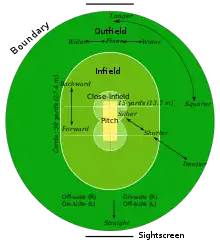
The bowling side is subjected to fielding restrictions during an ODI, in order to prevent teams from setting wholly defensive fields. Fielding restrictions dictate the maximum number of fielders allowed to be outside the thirty-yard circle.
Under current ODI rules, there are three levels of fielding restrictions:
- In the first 10 overs of an innings (the mandatory powerplay), the fielding team may have at most two fielders outside the 30-yard circle.[10] This allows only attacking fields to be set during the powerplay.
- Between 11 and 40 overs four fielders will be allowed to field outside the 30-yard circle. Either an Attacking or Normal Field can be set in the second powerplay.[11]
- In the final 10 overs five fielders will be allowed to field outside the 30-yard circle.[12][13] All three types of fields (attacking, defensive and normal fields) Can be used in the third powerplay.
The three powerplays are referenced by P1, P2 and P3 respectively, usually displayed near the score in modern scorecards.
History
Fielding restrictions were first introduced in the Australian 1980–81 season.[14] By 1992, only two fielders were allowed outside the circle in the first fifteen overs, then five fielders allowed outside the circle for the remaining overs.[15] This was shortened to ten overs in 2005, and two five-over powerplays were introduced, with the bowling team and batting team having discretion over the timing for one-one each. In 2008, the batting team was given discretion for the timing of one of the two powerplays. In 2011, the teams were restricted to completing the discretionary powerplays between the 16th and 40th overs; previously, the powerplays could take place at any time between the 11th and 50th overs. Finally, in 2012, the bowling powerplay was abandoned, and the number of fielders allowed outside the 30-yard circle during non-powerplay overs was reduced from five to four.[5][16]
Trial regulations
The trial regulations also introduced a substitution rule that allowed the introduction of a replacement player at any stage in the match and until he was called up to play he assumed the role of 12th man. Teams nominated their replacement player, called a Supersub, before the toss. The Supersub could bat, bowl, field or keep wicket once a player was replaced; the replaced player took over the role of 12th man. Over the six months it was in operation, it became very clear that the Supersub was of far more benefit to the side that won the toss, unbalancing the game. Several international captains reached "gentleman's agreements" to discontinue this rule late in 2005. They continued to name Supersubs, as required but they did not field them by simply using them as a normal 12th man. On 15 February 2006, the ICC announced their intention to discontinue the Supersub rule on 21 March 2006. Two balls were trialed in ODI for two years but it was rejected.[17]
Teams with ODI status
The International Cricket Council (ICC) determines which teams have ODI status (meaning that any match played between two such teams under standard one-day rules is classified as an ODI).
Permanent ODI status
The twelve Test-playing nations (which are also the twelve full members of the ICC) have permanent ODI status. The nations are listed below with the date of each nation's ODI debut after gaining full ODI status shown in brackets (Sri Lanka, Zimbabwe, Bangladesh, Ireland, and Afghanistan were ICC associate members at the times of their ODI debuts):
.svg.png.webp) Australia (5 January 1971)
Australia (5 January 1971) England (5 January 1971)
England (5 January 1971) New Zealand (11 February 1973)
New Zealand (11 February 1973) Pakistan (11 February 1973)
Pakistan (11 February 1973) West Indies (5 September 1973)
West Indies (5 September 1973) India (13 July 1974)
India (13 July 1974) Sri Lanka (13 February 1982)
Sri Lanka (13 February 1982) South Africa (10 November 1991)
South Africa (10 November 1991)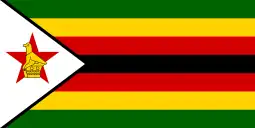 Zimbabwe (25 October 1992)
Zimbabwe (25 October 1992) Bangladesh (10 October 1997)
Bangladesh (10 October 1997).svg.png.webp) Afghanistan (5 December 2017)
Afghanistan (5 December 2017) Ireland (5 December 2017)
Ireland (5 December 2017)
Temporary ODI status
Between 2005 and 2017, the ICC granted temporary ODI status to six other teams (known as Associate members). In 2017, this was changed to four teams, following the promotion of Afghanistan and Ireland to Test status (and permanent ODI status). The ICC had previously decided to limit ODI status to 16 teams.[18] Teams earn this temporary status for a period of four years based on their performance in the ICC World Cup Qualifier, which is the final event of the ICC World Cricket League. In 2019, ICC increased the number of teams holding Temporary ODI status to eight. The following eight teams currently have this status (the dates listed in brackets are of their first ODI match after gaining temporary ODI status):
 Scotland (from 27 June 2006, until the 2026 Cricket World Cup Qualifier)
Scotland (from 27 June 2006, until the 2026 Cricket World Cup Qualifier) United Arab Emirates (from 1 February 2014, until the 2026 Cricket World Cup Qualifier)
United Arab Emirates (from 1 February 2014, until the 2026 Cricket World Cup Qualifier) Nepal (from 1 August 2018, until the 2026 Cricket World Cup Qualifier)
Nepal (from 1 August 2018, until the 2026 Cricket World Cup Qualifier) Netherlands (from 1 August 2018, until the 2026 Cricket World Cup Qualifier)
Netherlands (from 1 August 2018, until the 2026 Cricket World Cup Qualifier)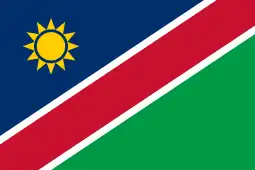 Namibia (from 27 April 2019, until the 2026 Cricket World Cup Qualifier)
Namibia (from 27 April 2019, until the 2026 Cricket World Cup Qualifier) Oman (from 27 April 2019, until the 2026 Cricket World Cup Qualifier)
Oman (from 27 April 2019, until the 2026 Cricket World Cup Qualifier) United States (from 27 April 2019, until the 2026 Cricket World Cup Qualifier)
United States (from 27 April 2019, until the 2026 Cricket World Cup Qualifier).svg.png.webp) Canada (from 27 March 2023, until the 2026 Cricket World Cup Qualifier)
Canada (from 27 March 2023, until the 2026 Cricket World Cup Qualifier)
Additionally, eight teams have previously held this temporary ODI status before either being promoted to Test Status or relegated after under-performing at the World Cup Qualifier:
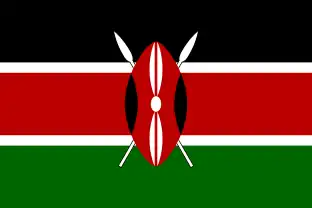 Kenya (from 10 October 1997, until 30 January 2014)
Kenya (from 10 October 1997, until 30 January 2014).svg.png.webp) Canada (from 16 May 2006, until 28 January 2014)
Canada (from 16 May 2006, until 28 January 2014) Bermuda (from 17 May 2006, until 8 April 2009)
Bermuda (from 17 May 2006, until 8 April 2009) Ireland (from 13 June 2006, until 21 May 2017)
Ireland (from 13 June 2006, until 21 May 2017) Netherlands (from 4 July 2006, until 28 January 2014)
Netherlands (from 4 July 2006, until 28 January 2014).svg.png.webp) Afghanistan (from 19 April 2009, until 14 June 2017)
Afghanistan (from 19 April 2009, until 14 June 2017) Hong Kong (from 1 May 2014, until 17 March 2018)
Hong Kong (from 1 May 2014, until 17 March 2018)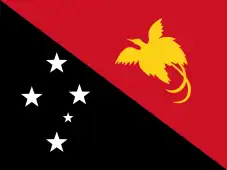 Papua New Guinea (from 8 November 2014, until 5 April 2023)
Papua New Guinea (from 8 November 2014, until 5 April 2023)
The ICC occasionally granted associate members permanent ODI status without granting them full membership and Test status. This was originally introduced to allow the best associate members to gain regular experience in internationals before making the step up to full membership. First Bangladesh and then Kenya received this status. Bangladesh have since made the step up to Test status and full membership; but as a result of disputes and poor performances, Kenya's ODI status was reduced to temporary in 2005, meaning that it had to perform well at World Cup Qualifiers to keep ODI status. Kenya lost ODI status after finishing in fifth place at the 2014 Cricket World Cup Qualifier event.[19]
Special ODI status
The ICC can also grant special ODI status to all matches within certain high-profile tournaments, with the result being that the following countries have also participated in full ODIs, with some later gaining temporary or permanent ODI status also fitting into this category:
 East Africa (1975 World Cup)
East Africa (1975 World Cup) Sri Lanka (1975 World Cup, 1979 World Cup)
Sri Lanka (1975 World Cup, 1979 World Cup).svg.png.webp) Canada (1979 World Cup, 2003 World Cup, 2023 ICC Cricket World Cup Qualifier Play-off)
Canada (1979 World Cup, 2003 World Cup, 2023 ICC Cricket World Cup Qualifier Play-off) Zimbabwe (1983 World Cup, 1987 World Cup, 1992 World Cup)
Zimbabwe (1983 World Cup, 1987 World Cup, 1992 World Cup) Bangladesh (1986 Asia Cup, 1988 Asia Cup, 1990 Austral-Asia Cup, 1990 Asia Cup, 1995 Asia Cup, 1997 Asia Cup)
Bangladesh (1986 Asia Cup, 1988 Asia Cup, 1990 Austral-Asia Cup, 1990 Asia Cup, 1995 Asia Cup, 1997 Asia Cup) United Arab Emirates (1994 Austral-Asia Cup, 1996 World Cup, 2004 Asia Cup and 2008 Asia Cup)
United Arab Emirates (1994 Austral-Asia Cup, 1996 World Cup, 2004 Asia Cup and 2008 Asia Cup) Kenya (1996 World Cup, 1996 Sameer Cup)
Kenya (1996 World Cup, 1996 Sameer Cup) Netherlands (1996 World Cup, 2002 ICC Champions Trophy and 2003 World Cup)
Netherlands (1996 World Cup, 2002 ICC Champions Trophy and 2003 World Cup) Scotland (1999 World Cup)
Scotland (1999 World Cup) Namibia (2003 World Cup)
Namibia (2003 World Cup) Hong Kong (2004 Asia Cup, 2008 Asia Cup and 2018 Asia Cup)
Hong Kong (2004 Asia Cup, 2008 Asia Cup and 2018 Asia Cup) United States (2004 ICC Champions Trophy)
United States (2004 ICC Champions Trophy) Jersey (2023 ICC Cricket World Cup Qualifier Play-off)
Jersey (2023 ICC Cricket World Cup Qualifier Play-off)
Finally, since 2005, three composite teams have played matches with full ODI status. These matches were:
- The World Cricket Tsunami Appeal, a one-off match between the Asian Cricket Council XI vs ICC World XI in the 2004/05 season.
- The Afro-Asia Cup, two three-ODI series played in 2005 and 2007 Afro-Asia Cup between the Asian Cricket Council XI and the African XI.
- The ICC Super Series, a three-ODI series played between the ICC World XI and the then-top-ranked Australian cricket team in the 2005/06 season.

One Day records
NatWest Series
The NatWest Series is the name used for One Day International cricket tournaments held in England since 2000. The tournaments are sponsored by the National Westminster Bank.
2000 to 2005: triangular series
The original format of the NatWest Series was a three-team triangular tournament, involving England and two visiting international sides. Each of the three teams would play the other two three times each, after which the two top teams would face each other in a final at Lord's in London. The ten matches would be played at the seven international grounds (Lord's, Edgbaston, Headingley, Old Trafford, The Oval, Trent Bridge and the Riverside Ground), as well as other county cricket grounds such as the St Lawrence Ground (Canterbury), Sophia Gardens (Cardiff), the Rose Bowl (Southampton) and at Bristol.
The first NatWest Series was held in 2000 a year after England hosted the World Cup. The West Indies and Zimbabwe were the two visiting teams, with England and Zimbabwe contesting the first final. England won by 6 wickets, with Darren Gough taking 3–20 and Alec Stewart scoring 97.
It used to be a common occurrence at the end of cricket Test matches for the crowd to invade the pitch to watch the presentation from the pavilion balcony. In the UK this tradition ended in 2001 Natwest Series after a steward was injured in a pitch invasion at a one-day match between England and Pakistan.[20] Invading the pitch can now warrant a £1,000 fine, and post-match presentations are held on the field. During the presentation ceremony at the 2001 NatWest Series final on the balcony at Lord's, Michael Bevan was hit in the face with a beer can thrown from the crowd.[21]
Other notable matches in the series included the 2002 final, where England faced India. England posted a total of 325–5 with Nasser Hussain scoring 115, his only one day century, and Marcus Trescothick also scoring 109, but were beaten by India who made 326–8 thanks to Mohammad Kaif scoring 87 and Yuvraj Singh 69.[22]
In 2005, Bangladesh secured an unexpected victory over Australia in Cardiff, with Mohammad Ashraful scoring a century. Also, that year's final between Australia and England was a tie, with both sides scoring 196 and sharing the trophy.
By the time of the last triangular tournament in 2005, every test-playing nation had participated in at least one NatWest Series.
Tournaments by year
| Season | Winner | Runner-up | Third place |
|---|---|---|---|
| 2000 | |||
| 2001 | |||
| 2002 | |||
| 2003 | |||
| 2004 | |||
| 2005 | (shared) | ||
NatWest Challenge
For three seasons, from 2003 to 2005, three extra One Day Internationals were arranged for the England team in addition to the NatWest Series.
In 2003, Pakistan came to England for the three match series. In 2004, India played the NatWest Challenge as a prelude to the ICC Champions Trophy held in England that year. The following year, Australia played these matches between the NatWest Series and The Ashes. The ICC began their trial of the "Supersub", 12th man who could bat or bowl and "Powerplay", flexible fielding restrictions in the 2005 matches. The Supersub idea was jettisoned after a year whilst the Powerplay experiment was retained.
NatWest Challenge results
| Season | Matches | Winner | Runner-up | Result |
|---|---|---|---|---|
| 2003 | 3 | 2–1 | ||
| 2004 | 3 | 2–1 | ||
| 2005 | 3 | 2–1 | ||
2006 to date
The triangular format was abandoned in 2006, when England reverted to playing separate series against each visiting team (as they had in the Texaco Trophy from 1984 until 1998), but the name NatWest Series was retained. This was attributed to the poor crowds at matches not involving the home team.[23] The NatWest Series includes one or two matches in the Twenty20 cricket format against the touring team. The home team now plays 10 One Day Internationals a season.
In 2006, England played five matches against each of Sri Lanka and Pakistan, losing 5–0 to Sri Lanka and drawing 2–2 with Pakistan.
In 2007, the visiting teams were the West Indies and India: England lost the three-match series against the West Indies 2–1, and defeated India 4–3 in the seven-match series.
2008 Series
In June 2008, England lost the five-match series against New Zealand 3–1 with one match rained off. During a close match 4 at The Oval that NZ won, Grant Elliott was controversially run out after a mid-pitch collision with Ryan Sidebottom.
In August/September 2008, England beat South Africa 4–0 in the five match series with the final match rained off. Led by new captain Kevin Pietersen, a revitalised England beat an "end of tour" South Africa. In match 2 in Nottingham, SA were bowled out for 83 and England won the day/night match before the floodlights were required.
In the Twenty20 matches, England beat New Zealand in the only match in Manchester in June however the match against South Africa at Chester-le-Street was abandoned without a ball being bowled.
2009 Series
In May 2009, England led by Andrew Strauss beat the West Indies 2–0 with one match rained off. England won both matches, by 58 runs at Birmingham and by 6 wickets, Bristol, respectively. There were no Twenty20 internationals scheduled due to the ICC World Twenty20 event in June.
In August/September England were scheduled to play two Twenty20 matches at Manchester versus Australia. The first match was abandoned during the England innings and the second match was abandoned without a ball being bowled.
A seven match series was contested in September 2009 versus Australia after the home team's Ashes series win. The Australians won the first six, at The Oval, two at Lords, Southampton and two at Nottingham, and England won the final match at the Chester-le-Street. The top run scorer in the series was Andrew Strauss, 267 runs for England, who also scored most in the Ashes Test match series. Top wicket taker was Brett Lee, 12 wickets for Australia, who did not appear in the summer's Test series.[24][25]
2010 Series
During the 2010 summer there were three NatWest Series. In June 2010, England played a five match tour series versus Australia, who were in the country to play a Test series Pakistan. England beat the Australians 3–2 winning the first three matches with Eoin Morgan scoring the most runs, 238 runs and Stuart Broad taking 12 wickets on either side.
In July, England beat Bangladesh 2–1 in a three match series. The series was notable as Bangladesh beat England for the very first time in one-day cricket.
In September, England played Pakistan in two Twenty20 matches (not part of the NatWest Series) and a five match one-day match series. This series was played with the backdrop of spot fixing allegations made against Pakistani players during the Test match series against England. England won the two Twenty20 matches at Cardiff.
England then went on to win the one-day series 3–2. England lost the 3rd match at The Oval by 23 runs. The ICC launched an investigation into the match after receiving information that there were scoring irregularities during the England innings. Ijaz Butt the Pakistan Cricket Board chairman suggested that as "a conspiracy" to defraud Pakistan cricket. Butt went on to accuse England players of bad practice, allegations he later withdrew.[26] Andrew Strauss scored the most runs, 317 runs and Umar Gul took most wickets, 12, during the series.
2011 Series
In June and July 2011, England won the five match series 3–2 versus Sri Lanka. England won the close deciding 5th match at Old Trafford by 16 runs. The 2nd match at The Oval was notable as Sri Lankan batsman Sanath Jayasuriya played his 445th and final one-day international. England's captain Alastair Cook scored the most runs in the series (298). Sri Lankan Spinner Suraj Randiv and England fast bowler James Anderson were joint highest wicket takers, (9). Sri Lanka won the Nat West Twenty20 International by 9 wickets at Bristol.
In September, England won a five match series versus India 3–0 with one tied match and one no result. The 4th match at Lords ended in a tie under the Duckworth-Lewis method. The 5th match at Cardiff, was Rahul Dravid's 344th and final one-day international. He also played his first and last Twenty20 International at Old Trafford. England won that match, at the end of August, by 6 wickets. In the one day series, Indian captain MS Dhoni scored the most runs, (236) and English spinner Graeme Swann took the most wickets (8). India went through the whole tour of England without a win in an international match, after also losing the Test series 4–0.
England played two more Twenty20 Internationals at The Oval versus the West Indies to close the season. The series ended 1–1.
NatWest Series results since 2006
| Season | One Day Internationals | Twenty20 Internationals | ||||||
|---|---|---|---|---|---|---|---|---|
| Matches | Winner | Runner-up | Result | Matches | Winner | Runner-up | Result | |
| 2006 | 5 | 5–0[27] | 1 | 1–0[28] | ||||
| 5 | (shared) | 2–2*[29] | 1 | 1–0[30] | ||||
| 2007 | 3 | 2–1[31] | 2 | (shared) | 1–1[32] | |||
| 7 | 4–3[33] | (No Twenty20 Series played) | ||||||
| 2008 | 5 | 3–1*[34] | 1 | 1–0[35] | ||||
| 5 | 4–0*[36] | 1 | (Match abandoned)[37] | |||||
| 2009 | 3 | 2–0*[38] | (No Twenty20 Series played) | |||||
| 7 | 6–1[39] | 2 | (Both matches abandoned)[40][41] | |||||
| 2010 | 5 | 3–2*[42] | (No Twenty20 Series played) | |||||
| 3 | 2–1[43] | (No Twenty20 Series played) | ||||||
| 5 | 3–2[44] | 2 | 2–0[45][46] | |||||
| 2011 | 5 | 3–2[47] | 1 | 1–0[48] | ||||
| 5 | 3–0 + Tie *[49] | 1 | 1–0[50] | |||||
| 2012 | 3 | 2–0*[51] | 1 | 1–0[52] | ||||
'* One match no result
See also
References
- Gandhi, Anshul (15 June 2017). "5 changes to ODI cricket rules over the years". www.sportskeeda.com. Archived from the original on 6 August 2020. Retrieved 8 September 2020.
- "Beginners guide to the World Cup". cricket.com.au. Archived from the original on 18 January 2021. Retrieved 25 November 2020.
- Anthony Bateman; Jeffrey Hill (17 March 2011). The Cambridge Companion to Cricket. Cambridge University Press. p. 101. ISBN 978-0-521-76129-1.
- England in India 2011–12: MS Dhoni says it will be tricky adjusting to the new playing conditions | Cricket News | India v England Archived 16 October 2011 at the Wayback Machine. ESPN Cricinfo. Retrieved on 23 December 2013.
- "Standard One Day International match Playing Conditions" (PDF). International Cricket Council. Archived (PDF) from the original on 7 April 2014. Retrieved 6 April 2014.
- "The D/L method: answers to frequently asked questions". ESPN Cricinfo. September 2012. Archived from the original on 24 September 2015. Retrieved 16 January 2015.
- "The World Cup rain-rule farce". ESPN Cricinfo. 26 March 2011. Archived from the original on 16 January 2015. Retrieved 16 January 2015.
- "New rules to take effect from Oct 1". Cricbuzz. 1 October 2011. Archived from the original on 17 January 2015. Retrieved 16 January 2015.
- "New cricket ball change rule gets thumbs down from Ponting". Cricbuzz. 16 October 2007. Archived from the original on 17 January 2015. Retrieved 16 January 2015.
- "ICC gets rid of batting power play, five fielders allowed outside circle in last 10 overs of ODIs". Ibnlive.com. 27 June 2015. Archived from the original on 29 June 2015. Retrieved 14 June 2017.
- Nagraj Gollapudi (26 June 2015). "Bowlers benefit from ODI rule changes | Cricket". ESPN Cricinfo. Archived from the original on 28 June 2015. Retrieved 14 June 2017.
- "ICC do away with Batting Powerplay in ODIs". Cricbuzz.com. 26 June 2015. Archived from the original on 20 June 2017. Retrieved 14 June 2017.
- "ICC remove batting powerplays from ODIs to 'maintain a balance between bat and ball' | The National". Thenational.ae. 27 June 2015. Archived from the original on 30 June 2015. Retrieved 14 June 2017.
- "One-Day Cricket". CricTrivia.com. December 2005. Archived from the original on 9 February 2015. Retrieved 16 January 2015.
- "Colourful cricket, and that rain rule". ESPN Cric Info. Archived from the original on 21 June 2014. Retrieved 6 April 2014.
- "New ICC Rules for ODIs 2013". 30 December 2012. Archived from the original on 8 January 2013. Retrieved 2 February 2013.
- "ICC agrees to drop super-sub rule". BBC Sport. 20 March 2006. Archived from the original on 23 April 2023. Retrieved 4 January 2015.
- ICC rule no change to ODI status for World Cup Qualifiers Archived 16 February 2018 at the Wayback Machine. ESPN Cricinfo. Retrieved on 16 February 2018.
- "Kenya to lose ODI member status". ESPNcricinfo. 18 March 2005. Archived from the original on 18 April 2018. Retrieved 18 April 2018.
- Pitch invasion mars Pakistan win – BBC Sport
- Bevan hit in face by beer can during presentations – Cricinfo.com
- "Full Scorecard of England vs India Final 2002 - Score Report". ESPNcricinfo.
- ECB to scrap triangular tournament, Cricinfo, Retrieved on 6 June 2009
- Most runs in ENG v AUS NatWest Series 2009 – Cricinfo.com
- Most wickets in ENG v AUS 2009 NatWest Series 2009 – Cricinfo.com
- ICC Confirm Oval ODI was clean
- "NatWest Series [Sri Lanka in England], 2006". ESPNcricinfo.
- "Full Scorecard of England vs Sri Lanka Only T20I 2006 - Score Report". ESPNcricinfo.
- "NatWest Series [Pakistan in England], 2006". ESPNcricinfo.
- "Full Scorecard of England vs Pakistan Only T20I 2006 - Score Report". ESPNcricinfo.
- "NatWest Series [West Indies in England], 2007". ESPNcricinfo.
- "West Indies in England T20I Series 2007 - Live Cricket Schedules, Updates, Results". ESPNcricinfo.
- "NatWest Series [India in England], 2007". ESPNcricinfo.
- "NatWest Series [New Zealand in England], 2008". ESPNcricinfo.
- "Full Scorecard of England vs New Zealand Only T20I 2008 - Score Report". ESPNcricinfo.
- "Results". ESPNcricinfo.
- "Full Scorecard of England vs South Africa Only T20I 2008 - Score Report". ESPNcricinfo.
- "NatWest Series [West Indies in England], 2009". ESPNcricinfo.
- "NatWest Series [Australia in England], 2009". ESPNcricinfo.
- "Full Scorecard of England vs Australia 1st T20I 2009 - Score Report". ESPNcricinfo.
- "Full Scorecard of England vs Australia 2nd T20I 2009 - Score Report". ESPNcricinfo.
- "NatWest Series [Australia in England], 2010". ESPNcricinfo.
- "NatWest Series [Bangladesh in England], 2010". ESPNcricinfo.
- "NatWest Series [Pakistan in England], 2010". ESPNcricinfo.
- "Full Scorecard of England vs Pakistan 1st T20I 2010 - Score Report". ESPNcricinfo.
- "Full Scorecard of England vs Pakistan 2nd T20I 2010 - Score Report". ESPNcricinfo.
- "NatWest Series [Sri Lanka in England], 2011". ESPNcricinfo.
- "Full Scorecard of England vs Sri Lanka Only T20I 2011 - Score Report". ESPNcricinfo.
- "NatWest Series [India in England], 2011". ESPNcricinfo.
- "Full Scorecard of England vs India Only T20I 2011 - Score Report". ESPNcricinfo.
- "Results". ESPNcricinfo.
- "Full Scorecard of England vs West Indies Only T20I 2012 - Score Report". ESPNcricinfo.
External links
- NatWest International One Day Series (archived 9 August 2009)
- International Cricket Rules and Regulations at the ICC website (archived 6 August 2013)
- ICC Chief Executives' Committee approves introduction of ODI innovations by Jon Long, ICC website, 25 June 2005, Retrieved 25 November 2005 (archived 23 March 2006).
- "ODI changes to take effect in NatWest Challenge" by Cricinfo staff, Cricinfo, 30 June 2005, Retrieved 25 November 2005 (archived 23 March 2006).
- "Those new one-day rules explained" by Cricinfo staff, Cricinfo, 8 July 2005, retrieved 26 November 2005.
- NatWest Series Cricket – the official website of the NatWest Series (archived 5 February 2006)
- ECB NatWest Series (archived 9 February 2006)
.jpg.webp)
_2017.svg.png.webp)